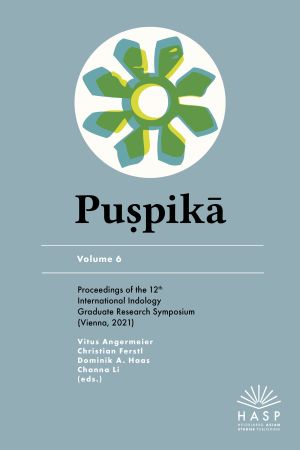Zitationsvorschlag
Lizenz (Kapitel)

Dieses Werk steht unter der Lizenz Creative Commons Namensnennung - Weitergabe unter gleichen Bedingungen 4.0 International.
Identifier (Buch)
Veröffentlicht
The Harṣacarita and Two Contemporary Eulogies in Epigraphic Texts
Reflections on the Polity of Kāmarūpa during the Reign of Bhāskaravarman
The period from c. 300 to 700 CE witnessed the emergence of classical Sanskrit literary traditions, the biography (carita) in prose and the versified eulogy or panegyric (praśasti), mostly of rulers and occasionally of influential brāhmaṇa families. The earliest known carita was Bāṇabhaṭṭa’s Harṣacarita, “Deeds of Harṣavardhana”. The seventh chapter (ucchvāsa) of the Harṣacarita entitled “The Gift of the Umbrella” (chatralabdhi) narrates a treaty sealed in common interest between the Kanauj ruler Harṣavardhana (606–647 CE) and Bhāskaravarman, a ruler of the Bhauma-Varman dynasty of Kāmarūpa, Assam (c. 600–650 CE). This paper attempts to situate the seventh ucchvāsa of the Harṣacarita vis-à-vis two significant copper plate inscriptions (both approximately dated to the 7th century CE) issued by Bhāskaravarman himself and containing elaborate eulogies as preambles. Bhāskaravarman was eulogized in versified praśastis which were followed by the operative part of these royal epigraphic texts recording the grants of landed property (exempted from revenue) to brāhmaṇas. These compositions which shower praises on Bhāskaravarman will be analysed in order to compare the representations and political profiles of Bhāskaravarman in two different genres of court literature – the first in the form of a carita by Bāṇabhaṭṭa and the second in the form of praśasti in royal epigraphic documents. Our use of the three literary and epigraphic texts will reflect on the making of the monarchical state society in the early 7th century CE in the Brahmaputra valley.
Keywords Sanskrit literature, epigraphy, panegyric, Assam, political history, polity









